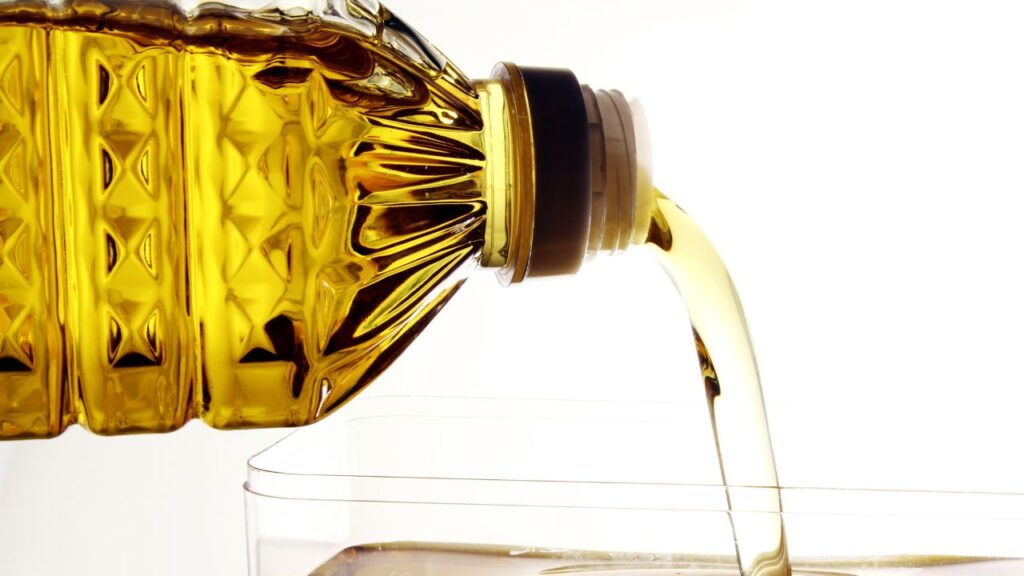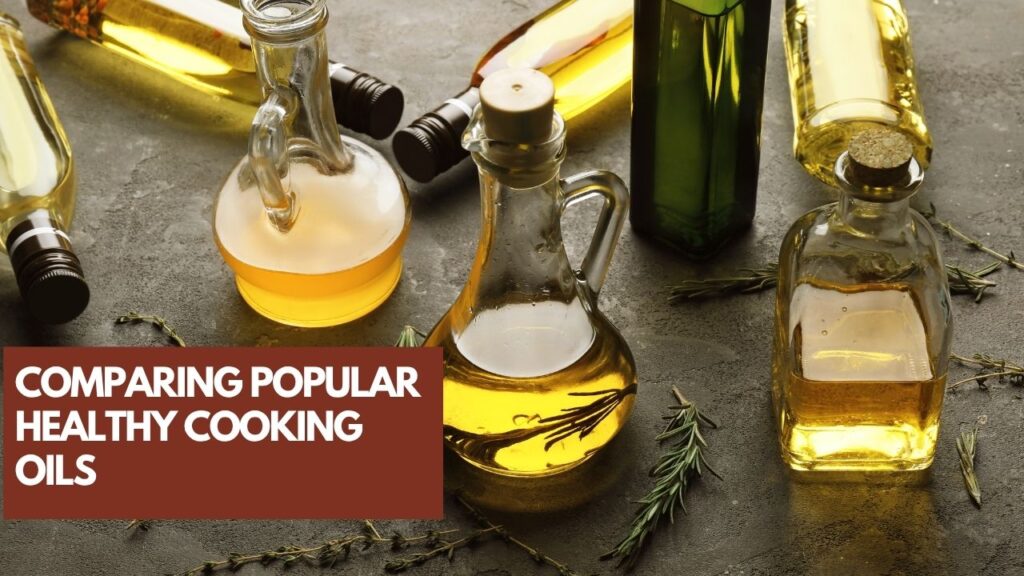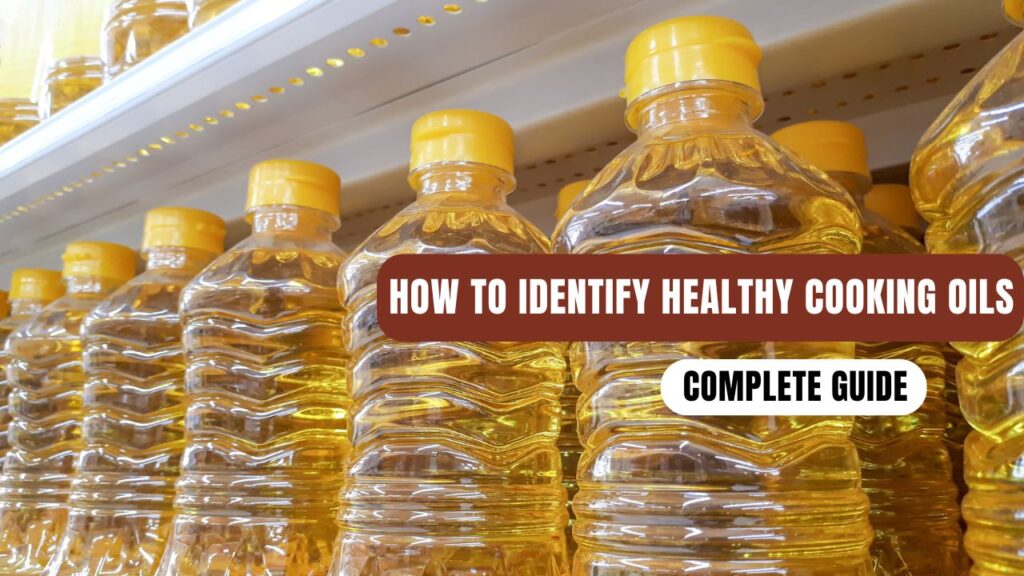Choosing the right cooking oil can be the difference between a heart-healthy meal and an unexpected health setback. With so many options lining the shelves—extra virgin this, cold-pressed that—it’s no wonder we often feel overwhelmed when deciding what’s truly best for our kitchens and our bodies.
Whether we’re sautéing vegetables, baking with care, or planning a week of clean meals, the oils we use matter more than we think. Healthy cooking oils aren’t just about taste or texture—they play a vital role in cholesterol levels, heart health, and even how nutrients are absorbed from our food.
In this complete guide, we’ll walk through how to identify truly healthy cooking oils, break down confusing terms like “smoke point” and “cold-pressed,” and compare popular oils to help us choose what works best for our cooking styles and health goals. With a few key tips and trusted sources on our side, making smarter oil choices can become second nature—saving us time, money, and guesswork.
Contents
1. Understanding Healthy Cooking Oils

Healthy cooking oils are packed with good fats that support the heart, brain, and body. But what makes an oil “healthy” goes beyond just being plant-based or organic.
What Defines a Healthy Cooking Oil?
A healthy cooking oil is low in saturated fat and high in unsaturated fat. These fats help reduce bad cholesterol and improve good cholesterol levels. Look for oils rich in monounsaturated and polyunsaturated fats, such as olive, avocado, and flaxseed oil.
According to the American Heart Association, these oils can support heart health when used in place of saturated fats like butter or lard.
Understanding the Nutritional Profile
Here’s a simple way to remember:
- Monounsaturated fats: Help lower LDL (bad cholesterol)
- Polyunsaturated fats: Offer Omega-3 and Omega-6 fatty acids
- Saturated fats: Best used sparingly
- Trans fats: Avoid completely
The Role of Omega Fats
Omega-3 and Omega-6 fats are essential for health. They support brain function, reduce inflammation, and may lower the risk of chronic diseases. Flaxseed, walnut, and chia seed oils are great sources of Omega-3s, while sunflower and corn oils provide Omega-6s.
2. Key Factors to Identify Healthy Oils
2.1 Smoke Point and Cooking Methods
The smoke point is the temperature at which oil starts to break down and smoke. Once it hits this point, it can lose flavor and form harmful compounds.
Here’s a helpful table to choose the right oil for your cooking method:
| Cooking Method | Best Oils | Smoke Point (°F) |
| Low-heat (salad, dressings) | Extra virgin olive oil, flaxseed oil | 320–375 |
| Medium-heat (sautéing) | Sesame oil, avocado oil | 375–400 |
| High-heat (frying, roasting) | Avocado oil, refined coconut oil | 450–520 |
Choosing the right oil for the temperature keeps meals healthier and tastier. Read more from UCLA Health about why smoke points matter.
2.2 Refined vs. Unrefined Oils
Unrefined oils are processed less, so they keep more nutrients and flavor. These oils are usually labeled as “cold-pressed” or “virgin.” They’re best for dressings and low-heat cooking.
Refined oils go through filtering and heating. This makes them more stable and better for high-heat cooking, but they lose some nutrients.
| Oil Type | Benefits | Best For |
| Unrefined (Cold-pressed) | More nutrients, stronger flavor | Dressings, drizzling |
| Refined | Neutral taste, longer shelf life | Frying, baking |
More about oil processing can be found via Harvard Health.
2.3 Processing Methods and Additives
Healthier oils are made using gentle methods like cold pressing or expeller pressing. These methods avoid chemicals and preserve more nutrients.
Watch out for these on labels:
- “Partially hydrogenated” = trans fats (avoid)
- “Solvent-extracted” = may use harsh chemicals
- Artificial flavors or colors = unnecessary additives
Look for oils labeled “non-GMO,” “organic,” or “minimally processed.” These give more peace of mind in your kitchen.
2.4 Shelf Life and Storage
Storing oils the right way keeps them fresh and safe. Light, heat, and air can make oils go rancid.
Quick storage tips:
- Keep oils in dark bottles or closed cabinets
- Don’t store near the stove or heat
- Refrigerate sensitive oils like flaxseed or walnut
You’ll know an oil is bad if it smells “off” or tastes bitter. For more on proper storage, visit the USDA’s food storage guidelines.
3. Comparing Popular Healthy Cooking Oils

Not all oils are created equal. Some shine for salads, others are stars in stir-fries. Let’s compare the most common healthy cooking oils.
3.1 Olive Oil (Extra Virgin & Light)
Extra virgin olive oil (EVOO) is rich in antioxidants and healthy fats. It’s cold-pressed, meaning no heat or chemicals are used, so more nutrients stay intact. Studies from Harvard T.H. Chan School of Public Health show that EVOO supports heart health, lowers inflammation, and may reduce the risk of chronic disease.
- Best for: Low to medium heat cooking, salads, drizzling
- Smoke point: ~375°F
- Flavor: Rich and fruity
Light olive oil is more processed, has a higher smoke point, and a milder taste.
3.2 Avocado Oil
Avocado oil is a top choice for high-heat cooking. It’s high in monounsaturated fats and has a neutral flavor. It also contains vitamin E and lutein, both good for the eyes and skin.
- Best for: Grilling, frying, sautéing
- Smoke point: ~520°F
- Flavor: Mild and buttery
According to Cleveland Clinic, avocado oil is just as healthy as olive oil and even better for frying.
3.3 Coconut Oil
Coconut oil has been debated for its high saturated fat content. Some say it’s heart-friendly due to medium-chain triglycerides (MCTs), while others advise caution.
- Best for: Baking, sautéing, plant-based dishes
- Smoke point: ~350°F (virgin), 450°F (refined)
- Flavor: Sweet and nutty
Use it in moderation. The American Heart Association still recommends replacing saturated fats with unsaturated ones.
3.4 Canola, Sunflower, and Grapeseed Oil
These oils are often affordable and have high smoke points. They’re good for frying or baking but can vary in quality.
- Canola oil: Mild flavor, high in omega-3s
- Sunflower oil: Rich in vitamin E
- Grapeseed oil: Good for sautéing, but more processed
Choose non-GMO or expeller-pressed versions when possible for better quality.
3.5 Specialty Oils: Walnut, Flaxseed, Sesame
These oils are full of flavor and nutrients but aren’t ideal for high heat.
- Walnut oil: High in omega-3, best for cold dishes
- Flaxseed oil: Must be refrigerated, great in smoothies or dressings
- Sesame oil: Toasted version adds flavor to stir-fries and sauces
These specialty oils are best used sparingly due to short shelf lives. For a breakdown, check the Berkeley Wellness oil guide.
4. Oils to Limit or Avoid

Not all cooking oils are good for long-term health. Some are processed in ways that remove nutrients or add harmful fats.
Hydrogenated Oils and Trans Fats
Hydrogenated oils go through a process that adds trans fats. These raise bad cholesterol and lower good cholesterol. The FDA has banned most trans fats in packaged foods, but some still sneak into processed snacks or fried foods.
Avoid oils labeled as:
- Partially hydrogenated
- Shortening (often in baked goods)
- Margarine with trans fats
Highly Refined Oils
Some oils lose most of their natural value during refining. They may also contain chemical residues from solvents used in processing.
Limit:
- Soybean oil (unless organic)
- Corn oil
- Vegetable blends with no clear source
Choosing cold-pressed or organic versions helps avoid unwanted additives.
5. Buying Guide: How to Choose the Right Oil for You
Picking a healthy oil depends on how we cook, what we eat, and even our health goals.
Cooking Style and Heat Level
Match the oil to the cooking method:
| Cooking Method | Ideal Oil |
| Salads, dips | Extra virgin olive, walnut |
| Sautéing, stir-fry | Avocado, sesame |
| Baking | Coconut, light olive |
| Frying | Avocado, refined peanut |
What to Look for on the Label
Healthy oils are easy to spot with a bit of practice. Look for:
- Cold-pressed or expeller-pressed
- Organic or non-GMO
- Dark bottles (protect from light)
- Minimal ingredients (just “oil” listed)
Consumer Reports suggests avoiding oils with additives, blends, or unclear labeling.
Recommended Oil Brands
Some trusted U.S. brands include:
- California Olive Ranch (extra virgin olive oil)
- Chosen Foods (avocado oil)
- Nutiva (coconut and flaxseed oil)
- La Tourangelle (artisan nut oils)
These are available in most grocery stores and online. Always check the harvest date and use within 6–12 months.
6. Maintenance and Storage Tips
Storing oils the right way keeps them fresh, safe, and full of nutrients. Even the healthiest oil can go bad if left in heat or light.
Keep It Cool, Dry, and Dark
To extend shelf life:
- Store oils in a cool, dark place, away from heat
- Use airtight containers with tight caps
- Keep oils like flaxseed and walnut in the fridge
Avoid storing oil near the stove or in sunlight. Warm temps and light break down good fats faster. According to the USDA, proper storage keeps oils safe and tasty longer.
Know the Signs of Spoiled Oil
Rancid oil smells bad—like crayons, old nuts, or playdough. It may also taste bitter or soapy.
Check for:
- Off smell
- Cloudiness or clumps
- Expired date
When in doubt, toss it out.
7. Practical Recommendations
Healthy cooking oils don’t have to be complicated or expensive. With a few simple choices, we can build a better kitchen routine.
Start With a Core Set
These three oils cover most needs:
- Extra virgin olive oil – for salads and low-heat dishes
- Avocado oil – for high-heat cooking
- Coconut oil – for baking or tropical dishes
Mix In Specialty Oils
Use oils like flaxseed, sesame, or walnut to boost flavor and add variety. Just remember to store them well and use them before they expire.
Budget-Friendly Tip
Buy oils in small amounts. Smaller bottles mean less waste and fresher taste. Check store brands or bulk sections at stores like Trader Joe’s or Whole Foods, which often offer affordable, high-quality oils.
8. Common FAQs
What’s the healthiest oil to cook with?
Extra virgin olive oil is one of the healthiest for most dishes. It’s rich in antioxidants and good fats. For high heat, avocado oil is another smart pick.
Is it bad to reuse cooking oil?
Yes, reusing oil—especially after frying—can increase harmful compounds. It’s best to use fresh oil each time or strain and store it carefully if reusing once. The National Center for Home Food Preservation advises against reusing oil more than once or twice.
Should I avoid all saturated fats?
Not all saturated fats are harmful in small amounts. Coconut oil is okay in moderation, but for heart health, focus more on unsaturated fats like those in olive and avocado oils.
How long does cooking oil last?
It depends on the oil:
- Olive, avocado: ~6–12 months in pantry
- Flaxseed, walnut: ~3–6 months in fridge
- Coconut (refined): up to 2 years
Always check dates and smell before use.
9. Conclusion
Healthy cooking starts with the right oil. By understanding smoke points, fat types, and how to read labels, we can make smarter, safer choices every day.
We don’t need to toss out every bottle in our pantry—but learning which oils to use (and when) helps us cook cleaner meals, protect our health, and enjoy better flavor. Whether we’re meal prepping or making dinner on the fly, having the right oils within reach sets us up for success.


